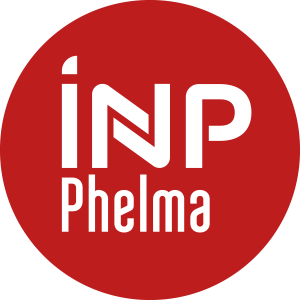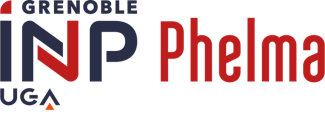Number of hours
- Lectures 20.0
- Projects 0
- Tutorials 0
- Internship 0
- Laboratory works 0
ECTS
ECTS 2.0
Goal(s)
To provide some examples of microsystems, microsensors and microactuators for the measurement of different physics phenomena.
Contact Matteo COCUZZAContent(s)
Pressure sensors: principles, piezoresistive, capacitive and resonant structures, center-boss applications, high temperature applications and solutions (SOI, SiC), medical pressure sensors
Accelerometers: principles, piezoelectric, piezoresistive, capacitive, resonating, tunneling and closed loop structures, commercial devices
Acoustic sensors: principles, APM, SAW, Love-wave, FPW, TSM structures, applications for the measurement of temperature, force, acceleration, torque, humidity, dew point, flow, electronic nose, measurement methods, wireless configurations, examples of fluidic actuators
Flow sensors: principles, hot wire, anemometric and time of flight configurations, commercial and prototype examples, lift-force and ISFET configurations
Microfluidics: the problem of scaling, advantages and drawbacks, materials, microchannels, micromixers, microneedles, microfilters, microvalves (active, passive and fixed), micropumps (with and without moving parts)
Chemical sensors: gas sensors (semiconductive metal oxides and FET structures), microhotplate structures, problem of sensitivity, selectivity and drift, H2 sensing, ISFET
Biochemical sensors: materials and transduction principles (potentiometric, amperometric, thermal, optical and gravimetric), biorecognition processes, immobilization processes, ISFET, ENFET, IMFET, the problem of packaging
Microsystems for biomedical applications: principles, diagnostic systems, drug delivery, tissue engineering, minimally invasive therapy and surgery devices
Microdevices for genetic diagnostics: the DNA, PCR, fluorescence techniques, restriction digestion, electrophoretic separation, hybridization, the problem of scaling, microdevices for PCR, separation and hybridization, integrated microchips for DNA analysis
MEMS for power generation: fuel cells, different types, applications of PEMFC and micro-DMFC, examples of micro-DMFC
Optical microdevices: the DLP technology, the DMD structure and applications
Prerequisites
Semester 8 - The exam is given in english only 
written exam (1h)
Contrôle continue : CC
Examen écrit Session1 : DS1
Examen écrit Session 2 : DS2
N1 = Note finale session 1
N2 = Note finale session 2
En présentiel :
N1 = % max(TdE, CC) + % DS1
N2 = % max(TdE, CC) + % DS2
En distanciel :
N1 =
N2 =
Commentaire :
Semester 8 - This course is given in english only 
Sze, S.M. Semiconductor sensors / ed. S.M. Sze. - New York : Wiley, copyr. 199



